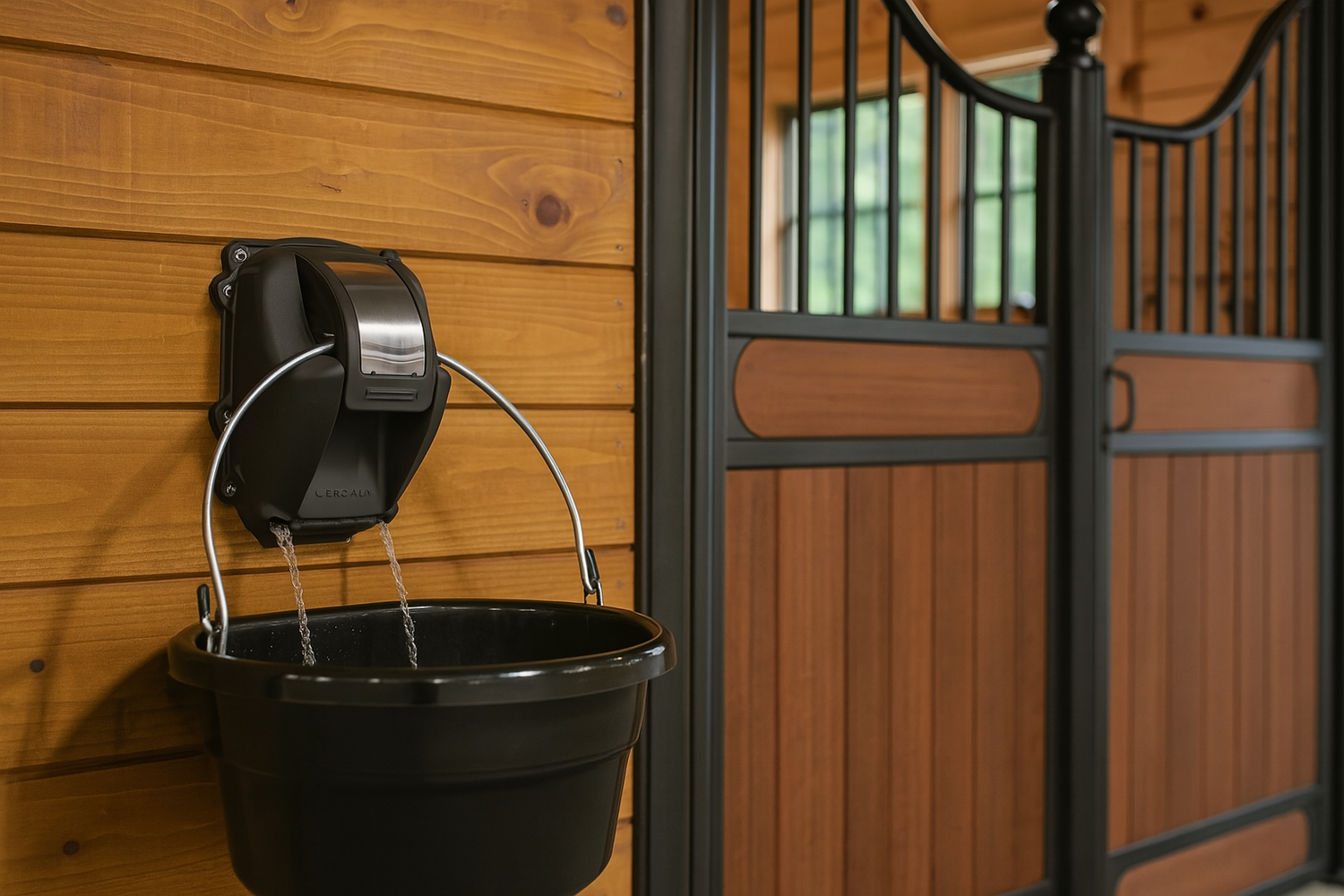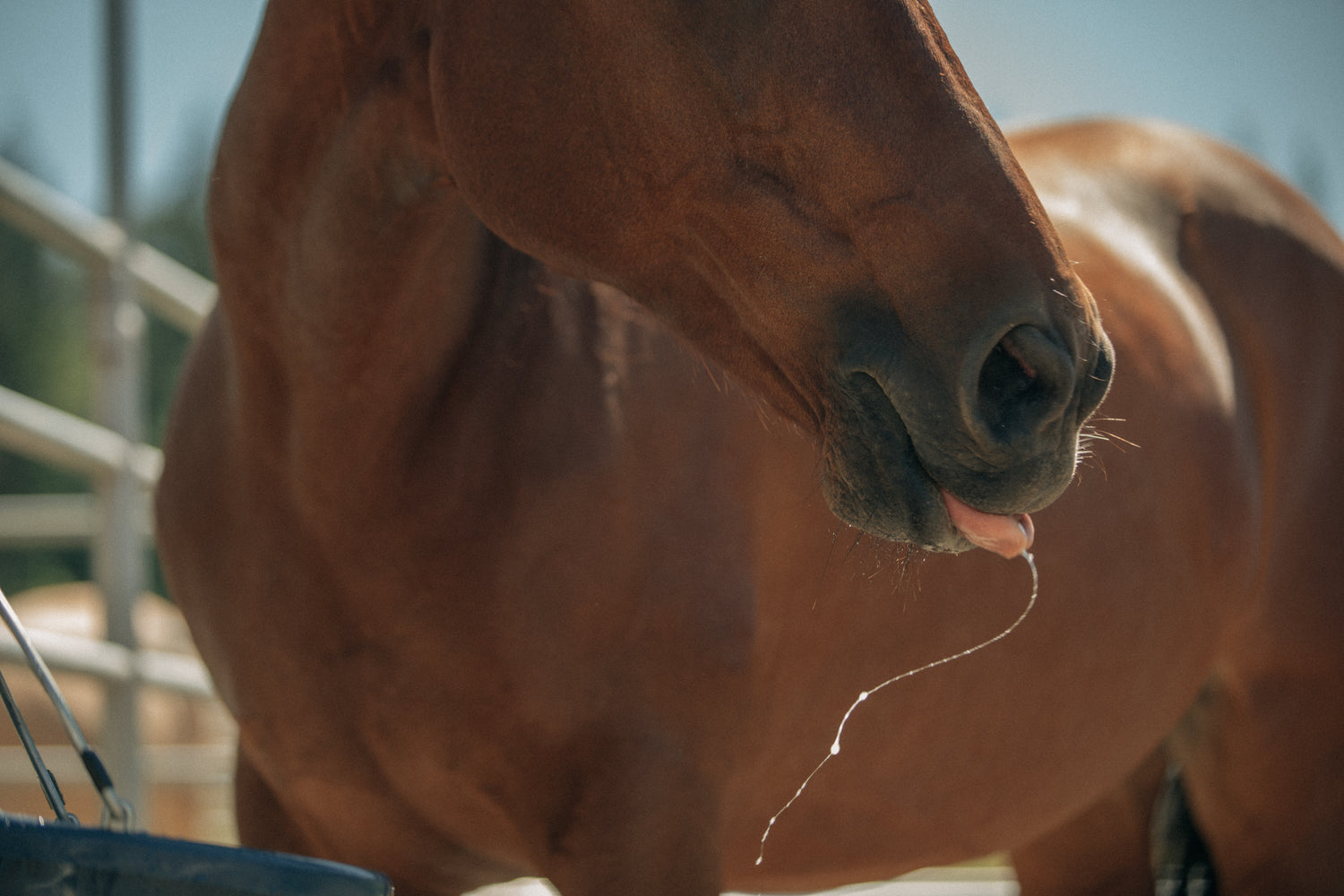
Embarking on the adventure of being a horse owner requires more than just passion. It demands a commitment to understanding and providing for your horse's needs.
Our new horse supply checklist outlines the important supplies and equipment you'll need to ensure both your horse's well-being and safety as you begin your journey into horse ownership.
Tack and Riding Equipment

For a first-time horse owner, having the right tack is essential for both the safety and comfort of the horse and rider.
Here is a compiled list of essential horse tack items:
- Halter: For leading and tying the horse.
- Lead rope: Used in conjunction with the halter.
- Saddle: A well-fitting saddle that is appropriate for your riding discipline.
- Saddle pad or blanket: To provide cushioning and protect the horse's back from the saddle.
- Bridle: Including a headstall, bit, and reins, appropriate to your horse and your riding style.
- Girth or cinch: To securely fasten the saddle to the horse.
- Stirrups and stirrup leathers (for English saddles): For the rider's feet, helping with mounting and providing support while riding.
Remember, the key is to ensure that all tack fits your horse correctly and is comfortable for both you and your horse. Regular maintenance and checks of all equipment are also crucial for safety.
Feed and Water

As a first-time horse owner, having the right feeding and water supplies is essential for the health and well-being of your horse.
Here's a list of essential feeding and water supplies:
- Feed buckets or troughs: For grain or pelleted feeds. It is important to have a sturdy, easy-to-clean bucket.
- Hay nets or hay racks: For feeding hay to slow down the horse's eating pace and/or reduce waste.
- Feed storage bins: To keep feed dry and protected from rodents and other pests.
- Water buckets : To provide your horse water in the stall, pasture, arena, or somewhere else on your property.
The specific needs can vary based on your horse's size, age, activity level, and health status. Regular consultation with a veterinarian or equine nutritionist is recommended to ensure the health and dietary needs of your horse are being met effectively.
Grooming Tools

It's not just about making your horse look good, but also about keeping them healthy and happy. Grooming is a vital part of horse care, and having the right tools can make all the difference.
Here is a checklist of grooming supplies:
- Curry comb: Used to remove dirt, mud, and loose hair.
- Stiff brush (dandy brush): Helps to remove heavier dirt and debris that the curry comb loosened.
- Soft brush (body brush): For removing finer particles and dust, and for adding shine to your horse's coat.
- Mane and tail comb: A wide-toothed comb or brush for detangling your horse’s mane and tail.
- Mane and tail detangler: Helps to easily comb through the mane and tail, reducing breakage.
- Hoof pick: Essential for cleaning your hooves and checking for injuries or stones.
- Shedding blade: Useful during the shedding season to help remove loose hair.
- Sweat scraper: To remove excess water after bathing.
- Towels: For drying off after a bath or for cleaning.
- Grooming bag or tote: To organize and transport all your grooming supplies.
Remember to clean and maintain your grooming tools regularly to ensure they are effective and safe to use on your horse.
Stall Maintenance

Managing a horse's stall is a daily task that contributes significantly to their health and well-being.
If you’ll be responsible for managing your horse’s stall, here are the supplies you need to keep it clean:
- Pitchfork: For mucking out the stall and managing bedding material.
- Muck bucket or wheelbarrow: To transport manure and used bedding out of the stall.
- Broom: For sweeping and keeping the stall area clean.
- Shavings or bedding: To provide a comfortable and absorbent surface for your horse.
- Salt block holder: Either ground or wall-mounted, for mineral blocks.
First Aid Kit

A well-stocked horse first aid kit is essential for any horse owner since it allows for immediate response to minor injuries or to stabilize a horse before veterinary assistance can be obtained.
Here is a list of items that should be included in a horse first aid kit:
- Digital thermometer: For checking your horse's temperature.
- Bandages and wraps: Include self-adhesive bandages, leg wraps, and gauze for wound dressing.
- Antiseptic wound cleaner: For cleaning cuts and abrasions.
- Antibiotic ointment: To apply on minor cuts and wounds to prevent infection.
- Cotton wool or cotton rolls: For cleaning wounds or padding under bandages.
- Scissors: With rounded ends, for cutting bandages and tapes.
- Saline solution: For cleaning out wounds or eyes.
- Tweezers or forceps: Useful for removing splinters or debris from wounds.
- Poultice material: For treating abscesses or swollen legs.
- Gloves: To maintain hygiene and protect against infection while treating wounds.
- Vet wrap: Self-adhesive, stretchy bandage that holds dressings in place.
- Elastic adhesive tape: For securing bandages.
- Liniment: For temporary relief of minor soreness and stiffness.
- Pain relief medication: Like phenylbutazone (Bute), but use only under veterinary guidance.
- Emergency contact information: Numbers for your vet, a nearby animal hospital, and a backup contact.
Trailering and Transportation

Having the right supplies for trailering and transportation is crucial for the safety and comfort of your new horse.
So whether you will be trailering your horse weekly or borrowing a friend’s trailer now and again, here is a list of items you will want to have handy:
- Trailer ties: To secure your horse inside the trailer.
- Leg wraps or shipping boots: To protect your horse’s legs during transport.
- Hay net: For feeding during transport, especially for longer journeys.
- Water bucket: To keep your horse hydrated.
- Small first aid kit: Tailored for both horse and human needs.
- Spare halter and lead rope: In case of breakage or loss.
- Muck bucket and shovel: To clean out the trailer.
- Emergency contact information: Including your vet and roadside assistance.
If you are not planning on trailering your horse regularly, it is always a good idea to have a list of trailer rental services on hand for when you do need one.
Seasonal Care
Horses, like all animals, are affected by the changing seasons. As a new horse owner, it is important to adapt their care routine and gear accordingly to ensure their comfort and health.
So though you may not need these supplies right away, it is important to be aware of the need as the seasons change.
Here is a checklist of essential seasonal supplies for your horse categorized into winter and summer needs:
Winter Supplies

- Blankets: Different weights depending on the climate; light-, medium-, and heavy-weight options may be necessary.
- Horse cooler: Useful for helping a horse dry off after exercise and preventing chills.
- Heated water bucket or heated watering system : To prevent water from freezing in colder temperatures.
- Non-slip footwear: So you can safely walk on snow or ice around the barn.
- Thermal gloves: To keep your hands warm while working with your horse.
- Extra hay: Horses need more calories to stay warm in winter, so plan for increased hay consumption.
- Salt blocks: To encourage drinking and prevent dehydration.
Summer Supplies

- Fly masks and fly sheets: To protect against flies and other insects.
- Fly spray: To keep flies and other pests at bay.
- Electrolytes: To replace salts lost through sweating.
- Fans or ventilation solutions: In the stable to maintain air circulation and reduce heat.
It is important to adjust this list based on your individual horse's needs and consult with a veterinarian for any specific health-related precautions for each season.
Navigating Your New Horse Owner Journey with Confidence
The path of horse ownership is a continuous learning experience, where the needs of your horse can vary based on age, breed, and activity level.
So whether you are managing daily grooming routines or adapting to seasonal changes, the right resources and products can significantly enhance your efficiency and effectiveness in horse care.
As you start this exciting journey, embrace the joys and challenges that come with being a new horse owner.






